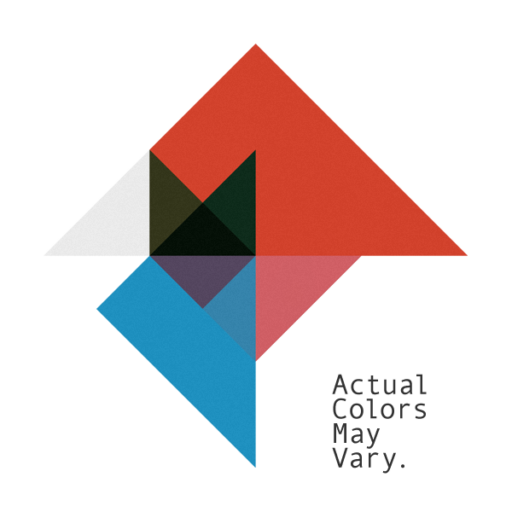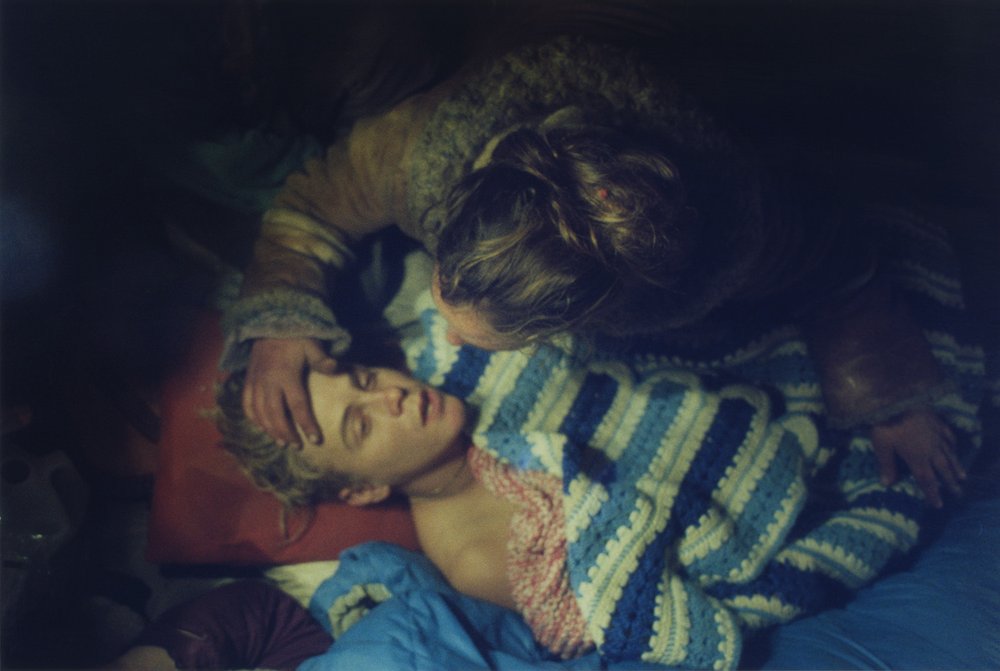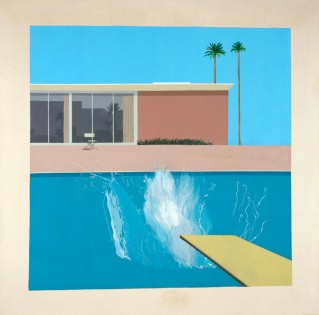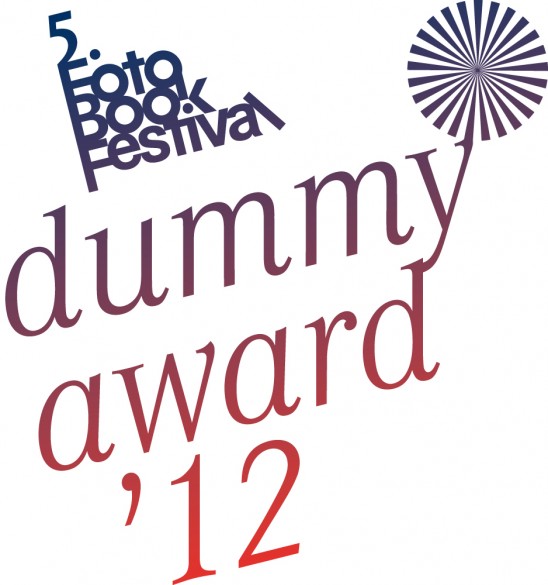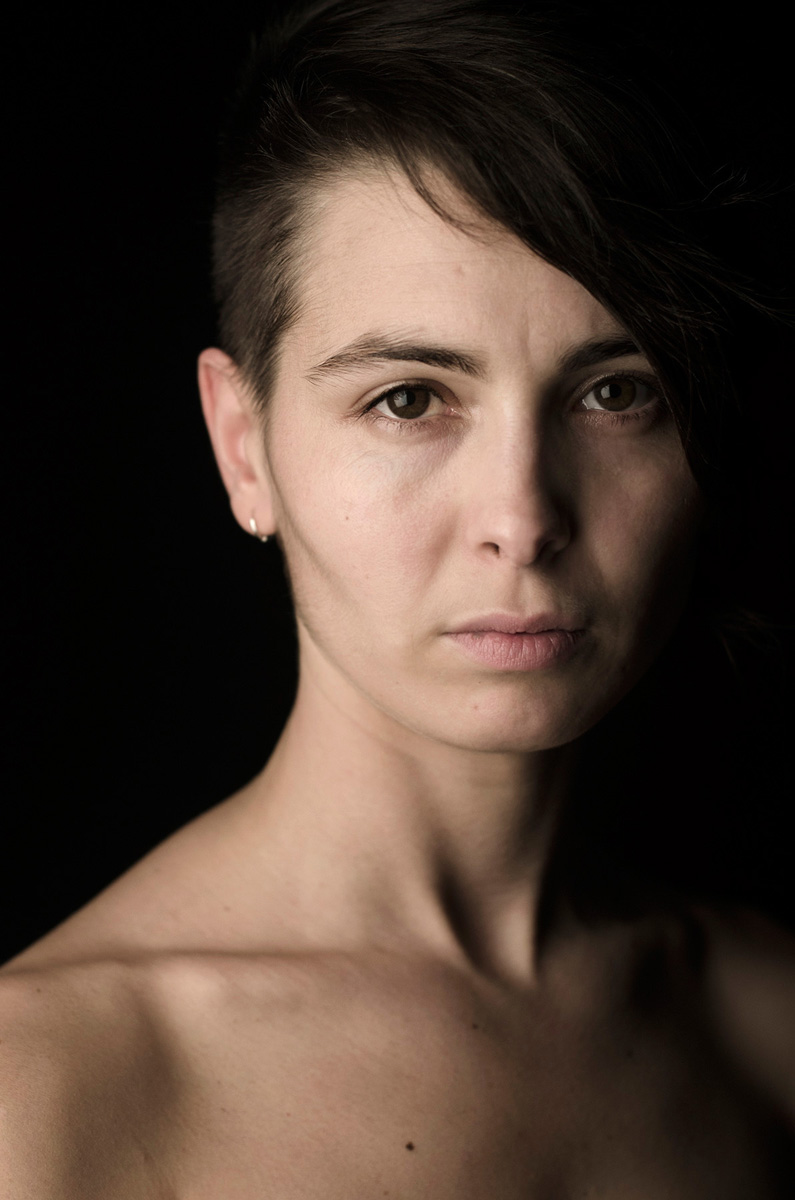The seventh edition of the Foam Talent Call 2013 had a total of around 1600 submissions from 72 different countries, which makes this year even more successful than last year’s Talent Call. Judging the entries has not been an easy task, but 16 artists have now been chosen to feature in the Foam Talent issue. We were deeply impressed by the high quality and variety of all submissions.
This year’s selected photographers are Jinkyun Ahn (KR), Jonathas De Andrade (BR), Thibault Brunet (FR), Joshua Citarella (USA), Salvi Danes (ES), Daniel Gordon (USA), Eeva Hannula (FI), Sohei Nishino (JP), Peter Puklus (HU), Augustin Rebetez (CH), Thomas Rousset (CH), Charlie Rubin (USA), Ross Sawyers (USA), David Benjamin Sherry (USA), Linda Voorwinde (NL) and Daisuke Yokota (JP).
From 3 September until 22 September Foam Magazine Talents 2013 with the work of all sixteen talents is on show on the canal of the Keizersgracht (Amsterdam). Celebrating the festival year ‘400 years of canals’ all the works will be shown on floating pontoons on the canal. With this, Foam creates a literal platform for talent. With this presentation, Foam celebrates the moment 150 years ago, that the location opened as Museum Fodor. This was the first time the location opened as an exhibition space, and is still used today. The canal will be an extension of the museum for three weeks. This out-door exhibition is for all people in Amsterdam and all visitors, whether by foot, bike or boat.
The exhibition will then travel to the Westergasfabriek for Unseen Photo Fair, where it will be on display until September 29th. The official launch of the Foam Magazine Talent Issue will take place at Unseen Photo Fair on Thursday September 26th, where Jörg Colberg will lead a round table discussion with the photographers.
The Foam Magazine Talent issue is designed to showcase young photographers from all over the world. It is one of the photographic industry’s most prestigious contests for young photographers. It is a career building platform, helping to launch aspiring talents into the international photography industry and giving them international acclaim and recognition.
–
Thibault Brunet


Brunet’s work is a photographic investigation inspired by the topic of reality and its imitations. Thibault Brunet focuses on virtual universes, and on images of pretence, fakes and look-alikes. By developing alternative techniques for taking pictures he aims to create ambiguities of genre, for instance by drawing upon the universes of video games, inspired as they are by American popular, historical and political culture. The games involve accomplishing missions: murder, blackmail, theft and escape, enemy liquidation, bombing, even the occupation of territories such as parts of Afghanistan. All the pictures presented here were taken over the course of his walks in these virtual universes. First Person Shooter was produced during a ‘training session’ in an American camp in Afghanistan. Brunet took pictures of soldiers he met from close up, then from further away. He broke open those synthetic faces, looking for light. All the elements of the reality of war are here, but we can sense a strange sensitivity in the looks. The marks of horror and suffering are on the soldiers’ faces, yet beyond this hyper-realistic anthropomorphism, we can also detect a vague sort of indifference.
–
Augustin Rebetez

Swiss artist Augustin Rebetez lays claim to his own special universe, a mysterious, sometimes bitter world in which images confront one another side by side on staggering wall installations. The works are abuzz with interaction – total, discordant, astonishing. Yet there is a manifest and all-pervading harmony. Augustin Rebetez makes vivacious poetry burst out of simple materials. For him, the marvellous is lodged between two rough planks. The contrasts that he stages – with pictures, drawings, installations or stop-motion movies – depict a tragicomic reality, daubed with a thick layer of coal, a layer of darkness to hide his wild humour, to stimulate his freedom of tone and his creative instinct. Here Rebetez shows some of the work he has produced since 2010. Eloquent and audacious, Augustin Rebetez works with a joyful dynamism to create a visually powerful, moving, sometimes dizzying, sometimes gloomy universe.
–
Peter Puklus


Dreamlike symbols, mock-ups, installations, ready-mades – with Handbook to the Stars, Peter Puklus compiles documentation in photographs of a sculpture experiment reminiscent of the form-and-light exercises of the 1920s avant-garde. For Puklus, Handbook to the Stars is an attempt to visualize the infinitely flexible and tricky associative capacity of our brains. He chose not to leave his studio during the making of this series, but to commit himself body and soul to his vision and observations, in the company of trash and bric-a-brac, in complete isolation from the outside world. Following inner voices, he reveals and gives body to deep, unknown, invisible relationships and conspiracies. This project has also been published in book form.
–
Daniel Gordon


Reuse is key to understanding Daniel Gordon’s working process, in which he culls photographic images from the internet and uses them to build three-dimensional tableaus which he then photographs with an 8×10 view camera. After the photograph has been taken, the sculptures are dismantled and the body parts and background patterns reused to make new works. Deploying a manual cut-and-paste technique, Gordon builds forms that expand upon the rich history of collage and appropriation, with a nod to the long lineage of the painted portrait and the still life. He melds together fragments and diverse histories to form a dislocated reality, a contemporary portrait in which different perspectives, profiles and people merge into a single, incongruous whole.
–
Jonathas de Andrade


Jonathas de Andrade is a visual artist using various means to investigate social, political, cultural and ideological matters that are at risk of disappearing from the collective memory. Through a variety of processes involving research, documentation and personal experience, De Andrade summons up a slice of memory and offers a deliberation on various forms of collective amnesia. His work is strongly rooted in contemporary Brazilian history. Out of the various projects De Andrade has made in recent years, we present the work 2 em 1 in which he subverts the logic of an instruction manual. For 2 em 1 he photographed two carpenters working to fuse together two single beds to create a double bed. Two of the same become one larger whole: 2 em 1 can be seen as a metaphor for homosexual love based on the impersonal aesthetics of prosaic furniture design. This bed made of two, and for two, would sit comfortably in a bedroom somewhere in the artist’s sun-drenched hometown of Recife, where a couple may lie down to sleep, or to make love.
–
Eeva Hannula
In The Structure of Uncertainty Eva Hannula deals with the uncertainty of observations, feelings and essences by combining personal archive material with staged photography. The role of the camera as a mediator of direct observations is called into question in pictures that were taken through binoculars. The perception is divided in two on the image surface. To Hannula the image is an uncertain thing, located somewhere between fact and fiction, language and body. By putting the familiar and the unfamiliar together, she tries to deal with conflicting feelings and surprising combinations which raise questions. Covering and hiding part of the image metaphorically refers to experiences and feelings in which something is repressed or incomprehensible. By then contrasting or adding something to them – marks and traces – Hannula creates a rich visual language with a strongly poetic quality.
–
Joshua Citarella


Central to Citarella’s visual language is an assessment of photographic tools and an allegorical extension of the digital process. It is intended to bridge the gap between digital image making and the traditional photographic process, and to reframe both as further complicated aspects of the existing questions that surround representation. The techniques illustrated range from conventional analogue procedures to the contemporary digital workflow. His series Combination Game is a photographic Big Bang, exhaustively rearranging all its elements, including every composition of objects down to the mosaic arrangement of the pixels themselves. In a society where communication is increasingly image-based, with all the images sharing the same means of production, Citarella feels it is essential to carry out a critical investigation into that production and to see what ideological subtext might be contained within it.
–
Thomas Rousset

The project Praberians is the result of four years of research in and around the village of Prabert. Rousset’s photos offer an ambiguous overlapping of representations and realities, a mixture that constantly flirts with the limits of real life and imagination, resulting in a staging device that plays with the codes of both fairytales and realism. The subjects, who often occupy a central place in the composition, seem to come from a different time or culture. Their adornments and costumes reinforce the sense of a melting pot of traditions. Praberians represents a resolutely utopian world, the result of Rousset’s awareness of how shallow the notion of community is in our contemporary Western world. His surreal work questions our relationship to reality and the importance of a collective unconscious.
–
Linda Voorwinde


Found images from the internet often function as a starting point in Linda Voorwinde’s work. In this particular project she made use of an option on Google Images called Visually Similar Images. It aroused her curiosity about what the outcome would be if she were to enter her own photographs, which are characterized by an attempt to abstract aspects of everyday life. When she uploaded her images it turned out that 95 per cent of the pictures generated by the program consisted of commercial imagery. By disrupting and editing the constant flow of images online she found herself in a comforting state of satisfaction. Might it be possible to saturate our desires, our wants and needs, by consuming the world by capturing it and by turning the images of commodities into a celebration of pleasure as such?
–
Jinkyun Ahn


Photography can be seen as a channel that is uniquely unilateral, allowing only a single perspective and direction. For Jinkyun Ahn the linear nature of photography resembles the way a family’s legacy is passed down from one generation to the next. Just as an image travels from the lens to a negative, and from a negative to a print, the unique qualities and traits of his parents have been transferred to Jinkyun Ahn, leaving an indelible imprint. He photographs his parents in carefully choreographed performances, making use of mirrors, reflections and doublings. The individual photographs are presented in well-considered linear order as links in a chain, addressing the unavoidability of family ties, the unbridgeable distance between the seen and the eye, mortality and the nature of photography.
–
Charlie Rubin


Charlie Rubin’s images are an exploration of the ordinary with a twist, often blurring the lines between the artificial and the real. In the series Strange Paradise he turns his attention to disparate regions of America, investigating the tensions between the real and the virtual worlds we inhabit. Some photographs are altered by a process of adding ink over photographic prints and then rescanning them. Some of the images tap in to the American West to reference classic American photographers. They captured a certain anxiety some years ago, and Strange Paradise could serve as an updated iteration through odd spaces and still lifes. In the second series, entitled Let’s Meet Up, Rubin moves from the image as distorted by an infusion of colour into the photograph to placing paint and objects over the photographic prints, so that the images are distorted by a clash of colour and materials.
–
Ross Sawyers


Through the process of constructing and photographing architectural models, Sawyers imagines fictional rooms that are unfinished, deserted and wrecked. Emptiness pervades every picture. The spaces his constructed models are based on have undergone an immediate transformation from home to empty building, stripped of the weight and significance associated with home. He is attempting to highlight the tension between housing as a saleable commodity and the home as a place of solitude and retreat. To Sawyer photography’s tenuous relationship with truth and reality is a fitting metaphor for the illusion of property and value. In a way that mirrors the eventual collapse of the promise these structures contain, the more one looks at these photographs the more the signs of a false construction emerge.
–
Sohei Nishino


By painstakingly cutting and pasting thousands of photographic particles, Sohei Nishino creates a mesmerizing artificial metropolis. The creation of a Diorama Map takes place as follows. He walks around the chosen city on foot, shooting from various location with film, then pastes and arranges an enormous mound of pieces. Compiled from thirteen cities, Diorama Map is still ongoing and will be developed in cities all over the world in the future. Nishino reinvests cities with wonder, and far from incidentally he cites eighteenth-century cartographer Inō Tadataka, who also carried out his surveys on foot, as an influence. Streets bustle, buildings tilt and sway. The Cubists would have adored these maps: we look up while looking down; we look down and see the sky. Nishino’s maps remind us that cities, for all their giddy chaos, are essentially miraculous human achievements.
–
Daisuke Yokota


Yokota has created a small image-making factory in his apartment, which he uses to create his haunting, distorted black-and-white images. Using a compact digital camera to create prints that can be considered as his raw material, Yokota endlessly rephotographed each image with a 6×7 film camera. The developing process and the potential of analogue image-making are pushed to the extreme to create imperfections and visual noise. Experimenting and trying to avoid doing anything the same way twice is essential to Daisuke Yokota’s method. To produce a large number of variations in the final image, he sometimes re-photographed it ten or more times. By doing so he not only tries to incorporate a sensation of time into his images but to increase the distance between the original and the final image, stressing photography’s inability to represent events from the past truthfully and factually. Recollections, memories and dreams are never far away in Yokota’s haunting work.
–
David Benjamin Sherry


Sherry’s work ranges from landscape and studio photography to collage and sculpture, often with a strong focus on colour. Working with analogue film and printing techniques, his use of anachronistic, primitive methods reflects a concern with craft, introducing the hand of the artist into a medium usually associated with mechanical reproduction. He often merges human and natural subjects, creating images in which landscapes take on anthropomorphic qualities and the humans in them become part of the landscape, rather than simply inhabiting it. His recent series Wonderful Land, made with a large-format, handmade, wooden analogue film camera over the course of several months, explores the topography of the American West through multiple processes, pushing photography to a chromatic extreme. The artist prints each image in his own darkroom, creating vivid and detailed images with brilliant colours.
–
Salvi Danes


In a consistent, almost typological series entitled Black Ice, Moscow the Catalan artist Salvi Danes tries to deal with the individual feelings of the Russian people rather than merely the current political situation in Russia. He believes that the complex Russian societal dynamic, created by history, the political and social system, the nature of the people and even the extreme climate, causes a powerful feeling of alienation among Russians. By photographing people sitting in public transport from outside, using a zoom lens, he emphasizes the unbridgeable distance between them and us, as if there is a layer of thin black ice between us and them. The melancholy gaze of the Moscovites gives the impression of a strong inner look and increases the sense that they are locked up in their public-transport cages, unable to change their destination.
–
→ (Pre-)Order Foam Magazine Talent Issue #36
→ Foam Talent Call 2013
→ Unseen Photo Fair
Artists websites
→ Jinkyun Ahn
→ Jonathas De Andrade
→ Thibault Brunet
→ Joshua Citarella
→ Salvi Danés
→ Daniel Gordon
→ Eeva Hannula
→ Sohei Nishino
→ Peter Puklus
→ Thomas Rousset
→ Charlie Rubin
→ Ross Sawyers
→ David Benjamin Sherry
→ Daisuke Yokota
–
All featured images are the intellectual property of their respective owners. All Rights Reserved.
